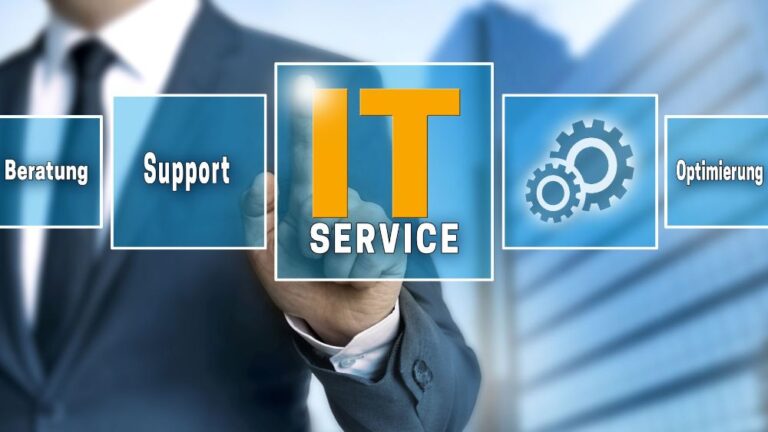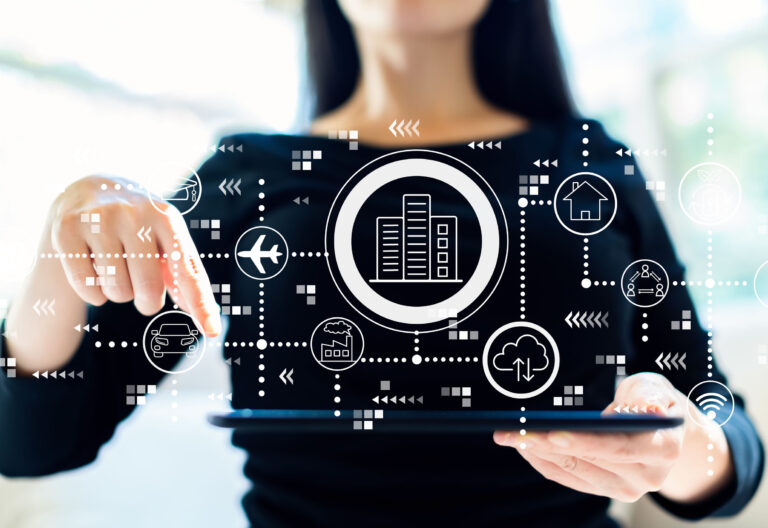The Internet of Things (IoT) has significantly changed industries by allowing devices to connect and exchange data seamlessly. With the continued growth of IoT, choosing the right IoT solution that fits your specific needs is essential. LoRa and LoRaWAN are two widely used options in the IoT field. This blog will discuss the differences between LoRa and LoRaWAN, their advantages, and factors to consider when selecting either of them.
Getting to know LoRa
LoRa, short for Long Range, is a low-power wide-area network (LPWAN) technology that enables long-range communication between devices. It utilizes a proprietary modulation technique known as chirp spread spectrum modulation, which allows for long-distance communication even in challenging environments. LoRa technology operates in unlicensed frequency bands, making it easily accessible for various applications.
One of the primary advantages of LoRa is its exceptional range. It can cover several kilometers in open areas, making it suitable for applications requiring long-range connectivity. Additionally, LoRa devices consume very little power, enabling long battery life for IoT devices. This feature is particularly beneficial for applications where devices need to operate for extended periods without frequent battery replacements. Cost-effectiveness is another advantage of LoRa, as it eliminates the need for costly infrastructure.
LoRa finds applications in various industries. For example, in agriculture, LoRa enables remote monitoring of soil moisture levels, temperature, and other environmental parameters, optimizing irrigation and crop management. Asset tracking is another common use case, where LoRa enables real-time tracking and monitoring of valuable assets, such as shipping containers or equipment, reducing the risk of loss or theft. In industrial environments, LoRa can facilitate remote monitoring of equipment and machinery, improving maintenance efficiency and reducing downtime.
A brief introduction to LoRaWAN
Long Range Wide Area Network is a networking protocol designed specifically for IoT applications using LoRa technology. It provides the framework for managing communication between end devices and network servers. LoRaWAN operates in a star-of-stars network topology, where end devices communicate with gateways that forward the data to a central network server.
LoRaWAN offers several advantages for IoT deployments. Firstly, it provides scalability, allowing for connecting thousands of devices within a single network. This makes LoRaWAN suitable for large-scale deployments like smart cities or industrial IoT applications. Bi-directional communication is another crucial feature of LoRaWAN. It enables devices to send data to the network server and receive commands or configuration updates, enhancing flexibility and functionality.
Data security is a significant concern in IoT deployments, and LoRaWAN addresses this by incorporating multiple layers of security. The protocol includes encryption mechanisms, authentication, and integrity checks to ensure the confidentiality and integrity of transmitted data. This makes LoRaWAN a reliable option for applications that handle sensitive data, such as healthcare or smart grid systems.
Comparing LoRa and LoRaWAN
While LoRa and LoRaWAN are often mentioned together, it’s essential to understand the distinction between them. LoRa refers to the physical layer technology, which enables long-range communication with low power consumption. On the other hand, LoRaWAN is the networking protocol built on top of LoRa, providing the necessary infrastructure and management capabilities for IoT deployments.
Both LoRa and LoRaWAN offer similar capabilities in terms of range and coverage. They can achieve long-range communication, covering several kilometers in open areas. However, LoRaWAN brings additional benefits in terms of scalability and network management. It allows for connecting many devices and provides efficient network maintenance and monitoring mechanisms.
Power consumption is another aspect to consider. LoRa devices are known for their low power consumption, enabling long battery life. LoRaWAN devices may consume slightly more power due to the additional networking functionalities. However, both options still offer excellent energy efficiency compared to other wireless technologies.
Data rate is another differentiating factor. LoRa technology supports lower data rates compared to LoRaWAN. While LoRa can handle small payloads and low data rates, LoRaWAN allows for higher and larger payloads, making it suitable for applications requiring more frequent and substantial data transmission.
Scalability is a critical consideration when choosing between LoRa and LoRaWAN. If your IoT deployment involves many devices or is expected to grow significantly in the future, LoRaWAN provides the necessary scalability features. It allows for efficient management of a vast number of devices within a single network, simplifying deployment and maintenance.
Infrastructure requirements should also be taken into account. LoRa technology requires the installation of LoRa gateways to establish connectivity between end devices and network servers. LoRaWAN, being a networking protocol, relies on these gateways to relay data to the central server. Therefore, when considering LoRaWAN, evaluating the availability of LoRa gateways in your target deployment area is crucial.
Factors to Consider when Choosing between LoRa and LoRaWAN
To make an informed decision between LoRa and LoRaWAN, consider the following factors:
1. Specific Requirements
Assess your IoT project’s unique needs, such as range, data rate, scalability, and power consumption.
2. Range and Coverage
Determine the geographical area you must cover and ensure that both options meet your range requirements.
3. Power Consumption
Evaluate the power consumption limitations of your IoT devices and consider the battery life required for your application.
4. Data Rate and Payload Size
Determine the frequency and volume of data transmission needed for your IoT application.
5. Scalability
Consider the number of devices you plan to deploy and the potential for future expansion. Evaluate if LoRa or LoRaWAN can handle your scalability requirements.
6. Infrastructure
Assess the availability and compatibility of LoRa gateways in your target deployment area.
You can select the IoT solution that aligns with your project goals and requirements by carefully considering these factors.
Case Studies
To gain a better understanding of real-world implementations, let’s explore a couple of case studies:
1. Smart City Solution
A city implemented a LoRaWAN network to connect various smart devices, including streetlights, parking sensors, and waste management systems. The scalability and bi-directional communication of LoRaWAN allowed them to efficiently manage many devices while enabling data-driven decision-making for improved city services.
2. Environmental Monitoring
A company deployed LoRa sensors across a large agricultural area to monitor soil moisture levels and weather conditions. The long-range capabilities of LoRa technology enabled them to cover vast distances with minimal infrastructure. The low power consumption of LoRa devices resulted in extended battery life, reducing maintenance efforts.
These case studies highlight how LoRa and LoRaWAN have been successfully utilized in different applications, showcasing their strengths and benefits.
Conclusion
Choosing the right IoT solution between LoRa and LoRaWAN depends on your specific requirements and project needs. LoRa offers exceptional range, low power consumption, and cost-effectiveness, while LoRaWAN provides scalability, bi-directional communication, and robust network management capabilities.
Evaluate factors such as range, power consumption, data rate, scalability, and infrastructure requirements before making a decision. Consider real-world case studies and consult with experts to ensure the optimal choice for your IoT deployment.
Frequently Asked Questions
Q1: Are LoRa and LoRaWAN compatible with each other?
Yes, LoRa devices are compatible with LoRaWAN. LoRaWAN is the protocol that allows LoRa devices to connect to a network and communicate with the central server. LoRa devices serve as the physical layer, while LoRaWAN handles the networking and management aspects.
Q2: What is the network coverage of LoRa and LoRaWAN?
LoRa and LoRaWAN can achieve long-range coverage, typically several kilometers in open areas. However, the coverage range can vary based on environmental factors, interference, and the number of gateways deployed in the area. It is important to assess your specific deployment area and consider the need for gateway placement for optimal coverage.
Q3: Can LoRa and LoRaWAN devices communicate with other wireless devices?
LoRa and LoRaWAN operate on their own specific protocol and modulation scheme. While they can communicate with devices within their respective networks, interoperability with other wireless devices using different protocols may require additional gateways or bridging solutions.
Q4: Are there any additional costs associated with deploying LoRa or LoRaWAN?
It depends on the number of devices, the infrastructure needs, and the network management processes that determine the cost of deploying LoRa or LoRaWAN. While LoRa technology eliminates the need for costly infrastructure, LoRaWAN may require investments in gateways and network servers. It is advisable to evaluate the overall cost implications for your specific deployment and consider the long-term benefits.
Q5: Are there any challenges in implementing LoRa or LoRaWAN?
Implementing LoRa or LoRaWAN can involve challenges such as gateway placement for optimal coverage, network planning, and device management. It is crucial to assess the available infrastructure, network management capabilities, and consult with experts to ensure a successful deployment.










